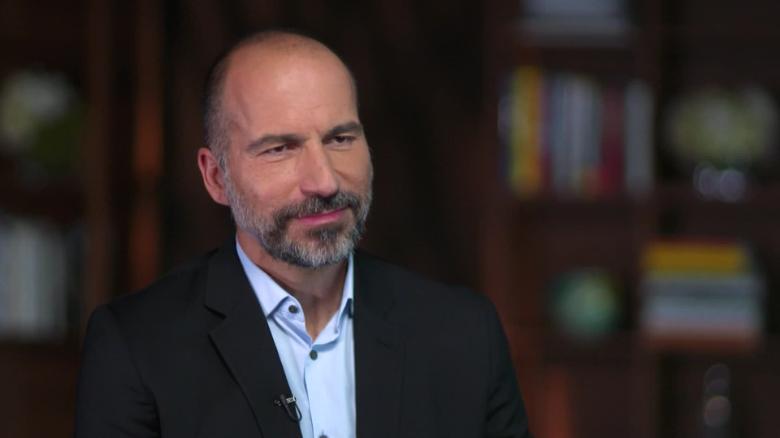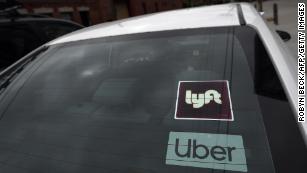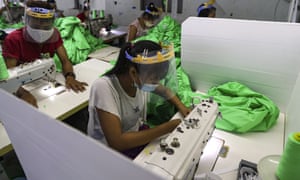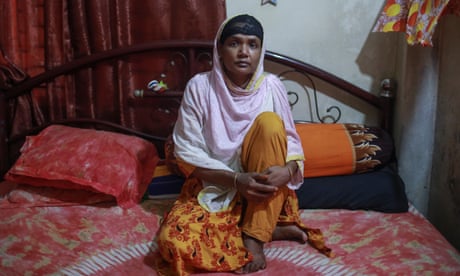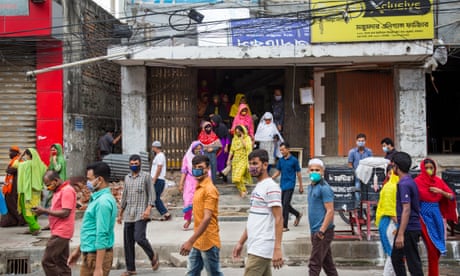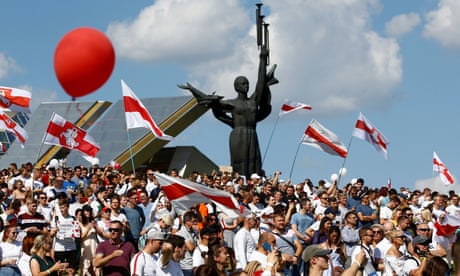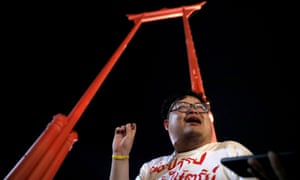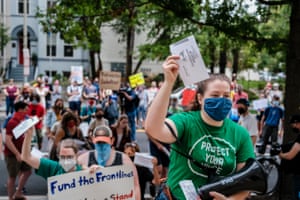Warning: Lukashenko Seems to Lack Strategy as Peaceful Protests Grow
August 16, 2020
By Mason Clark
Mass protests across Belarus against Belarusian President Alexander Lukashenko overshadowed a pro-Lukashenko rally in Minsk on August 16. Over 120,000 Belarusians joined a planned 2:00 pm Sunday afternoon rally in Minsk – though most protesters did not gather until later in the afternoon.[1] Rallies additionally grew in other cities across Belarus.[2] The protest movement remains peaceful and largely coordinated through independent Telegram channels as of August 16. Demonstrators are calling for Lukashenko to step down and re-run the August 9 election. Protests since August 10 have so far dissipated by dark, and protesters are slowly returning home as of 9:00 pm local Belarus time. Belarusian security forces did not impede the Sunday protests.
Protests will likely continue August 17, though no major rallies have been announced by prominent opposition Telegram channels. Several key industries – including factory workers and Belarusian state media broadcasters – will likely continue nationwide strikes begun on Friday August 14.[3] Prior violence and intimidation by security forces against opposition leaders has not deterred protests. However, Belarusian security forces retain the capability to escalate violence against protesters, potentially with Russian support.
Russian President Vladimir Putin and Lukashenko held a second call in two days the morning of August 16. Putin reaffirmed Russia’s willingness to provide “necessary assistance” to Belarus under the auspices of the Union State and the Collective Security Treaty Organization (CSTO).[4] Both leaders repeated their assertion the protests are internationally-backed. The Kremlin retains the capability to rapidly intervene in Belarus at Lukashenko’s request to crush the protests.
Lukashenko held a staged pro-government rally in Minsk concurrent with the opposition rally. Lukashenko made a 30-minute speech at a 2:00 pm rally in central Minsk.[5] Belarusian authorities claimed 70,000 attended, though independent counts estimate 10,000-15,000.[6] The Lukashenko government bused in protesters from across Belarus, many of whom reported to independent media they were threatened with the loss of their jobs or homes if they did not attend.[7] The pro-Lukashenko and opposition protests did not interact.
Lukashenko likely lacks a clear strategy to deal with the protest movement. Lukashenko appeared nervous, emotional, and unprepared throughout his speech. His rhetoric focused on his own role “saving” Belarus in the 1990s following the collapse of the Soviet Union.[8] Lukashenko focused on a narrative of the Belarusian people choosing him to lead them and protect them from chaos as compared to the opposition protesters. He framed the current choice as between stability and his rule versus chaos and the end of Belarus as a state.
Lukashenko continues to attempt to paint the protests as an international threat to the security of Belarus. Lukashenko accused NATO of backing the protests and stated protesters are offering “a new government [which has] already been created abroad.” Lukashenko has ceased claiming the protests are Russian backed following his August 15 call with Russian President Putin. He reiterated unfounded claims of protester threats again the families of security personnel.
The Belarusian military announced snap military drills on the border with Lithuania and Poland. The drills will take place from August 17 to August 20 in training grounds near the Belarusian borders with Lithuania and Poland, two states Lukashenko has accused of backing the protests.[9] The Belarusian Ministry of Defense announced several "tactical exercises” will be held and stated anti-aircraft missile regiments have already moved to the designated areas. The Belarusian MoD did not specify what units would participate, aside from battalion elements of two mechanized brigades (the 6th and 11th) which are conducting pre-scheduled combat training this week.
Lukashenko rejected any form of Belarusian neutrality between Russia and the West during his August 16 speech. Lukashenko stated Belarus “should not become a sanitary zone between East and West,” stressing Belarus cannot be a buffer between Europe and Russia. Lukashenko is increasingly rejecting his longstanding balancing act between the West and Russia. He is likely increasingly strained by the protests and faces diminishing options to deal with protests.
Lukashenko’s statements and actions this weekend seem unlikely to satisfy or cow the protesters. He has given no clear indication of a strategy for ending the demonstrations either through concessions or by force. If he is waiting for something, it is unclear what. Current indicators do not suggest that the situation will soon settle down in Lukashenko’s favor, but neither have the protesters shown the inclination to do more than demonstrate and strike. The situation remains fraught, and the risk of confrontation is high.
ISW will continue monitoring the situation and providing updates.
[1] Opposition estimates have ranged from 120,000 to over 200,000 protesters in Belarus. https://news.tut((.))by/society/696866.html; https://twitter.com/lentaruofficial/status/1295037621421441028?s=20; https://42.tut((.))by/696889.
[3] https://112((.))international/politics/indefinite-national-strike-announced-in-belarus-53937.html; https://www.bbc.com/news/world-europe-53790741.
[4] https://news.tut((.))by/economics/696881.html
[5] https://www.belta((.))by/president/view/vystuplenie-aleksandra-lukashenko-v-minske-na-mitinge-za-sohranenie-spokojstvija-mira-i-bezopasnosti-v-403047-2020/.
[7] https://finance.tut((.))by/news696825.html.
[8] Lukashenko has ruled Belarus since 1994.
